Outline of Exhibitions
Exhibition Halls
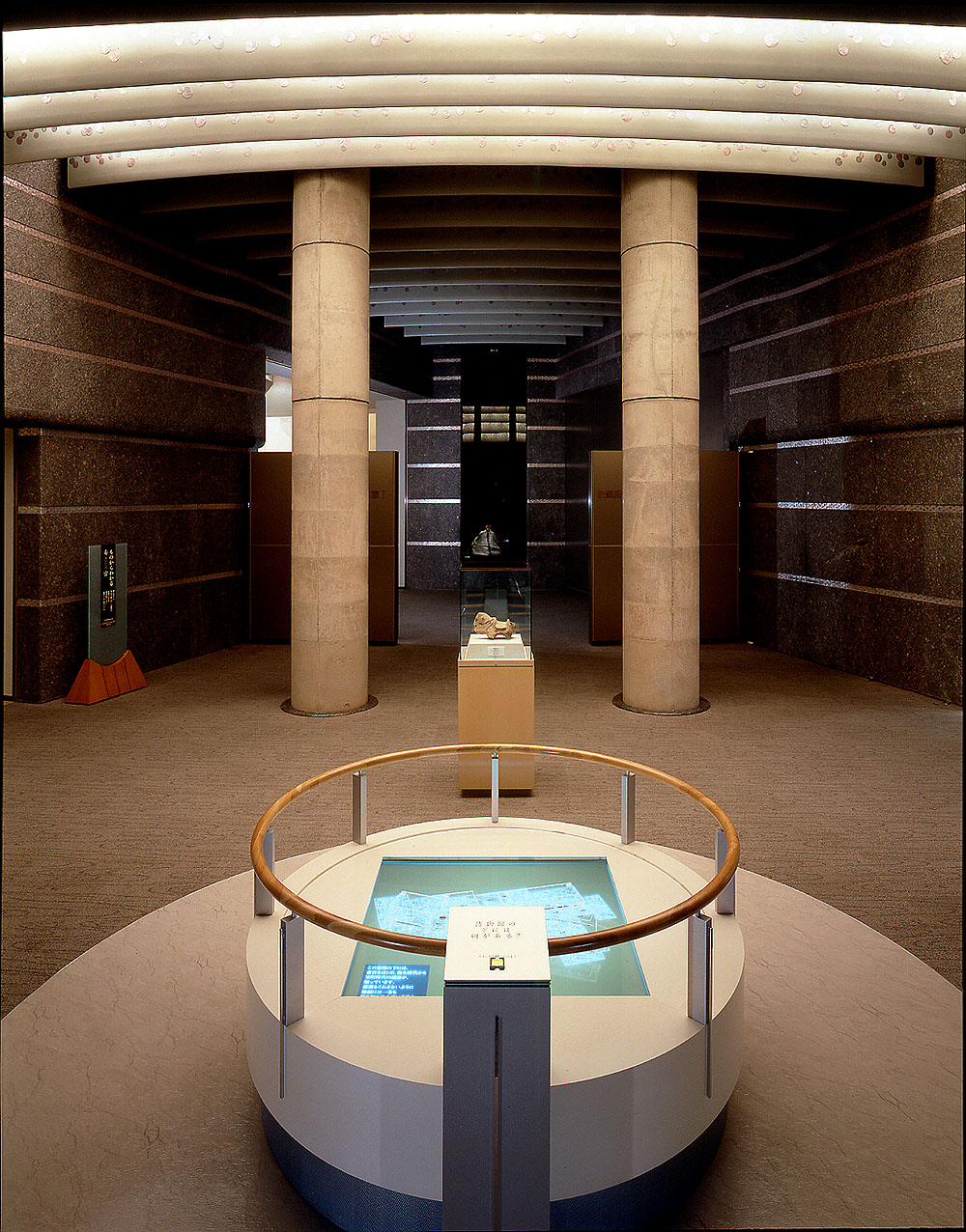 Welcome to the Saiku Historical Museum.
Welcome to the Saiku Historical Museum.“Saiku” refers to the residential palace and office of the Saio, an unmarried female member of the imperial family appointed to serve the Ise Jingu shrine. This museum conducts research into the Saiku based on archaeological excavations and documents, and makes its findings available to the public.
Long since abandoned and obsolete, the palace and office of the Saio now lie in ruins under the ground. The Saiku Historical Museum actually stands on a corner of the vast archeological site of the Saiku.
Care was taken not to damage the archaeological remains when building the museum.
Exhibition Hall I: The Saio
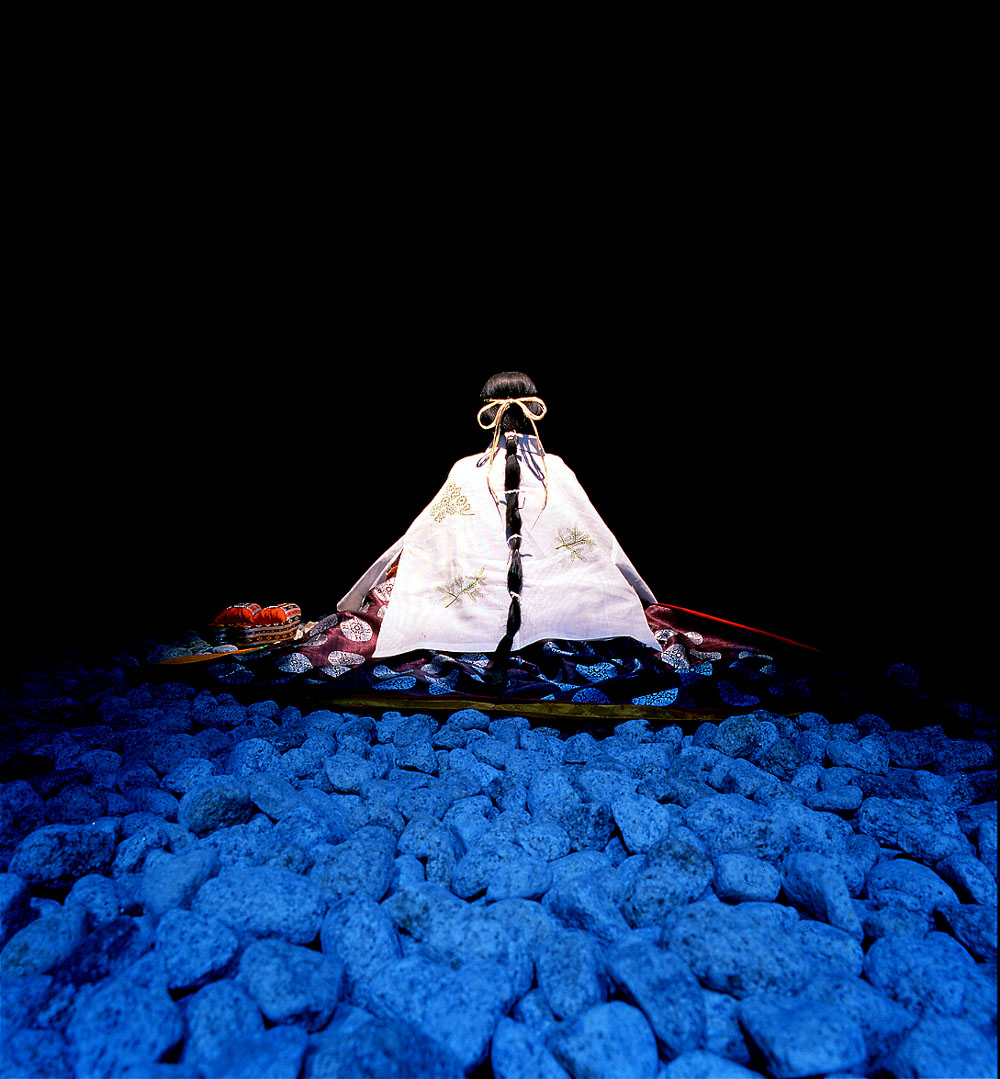 Welcome to the Saiku Historical Museum. The seated woman with her back to us is the Saio, shown here offering prayers to a kami (deity). A new Saio was chosen by pination from among the unmarried female members of the imperial family each time a new emperor came to the throne. More than 60 Saio were appointed over a period of about 660 years between the latter part of the 7th century and early part of the 14th century.
Welcome to the Saiku Historical Museum. The seated woman with her back to us is the Saio, shown here offering prayers to a kami (deity). A new Saio was chosen by pination from among the unmarried female members of the imperial family each time a new emperor came to the throne. More than 60 Saio were appointed over a period of about 660 years between the latter part of the 7th century and early part of the 14th century.After her appointment, the Saio spent about two years in the capital and its suburbs secluded from the secular world. The Saio subsequently performed a departure ceremony at the imperial palace attended by the emperor, before departing for the Saiku.
On display here is the sokaren, a type of palanquin used by the Saio on her journey from the capital to the Saiku. Exhibits also include a diorama showing the route of the Saio’s procession.
Exhibition Hall I: The Saiku’s administration and finances
 The Saiku complex included a state government office called the Saikuryo. The Saikuryo consisted of many departments, which employed a staff of over 500. On display are artifacts recovered from the Saiku site that indicate the Saikuryo’s activities. The state government funded the Saiku, where goods collected as taxes from various parts of the country were delivered. Also on display are examples of goods collected as tax.
The Saiku complex included a state government office called the Saikuryo. The Saikuryo consisted of many departments, which employed a staff of over 500. On display are artifacts recovered from the Saiku site that indicate the Saikuryo’s activities. The state government funded the Saiku, where goods collected as taxes from various parts of the country were delivered. Also on display are examples of goods collected as tax.
Exhibition Hall I: Lifestyle of the Saio
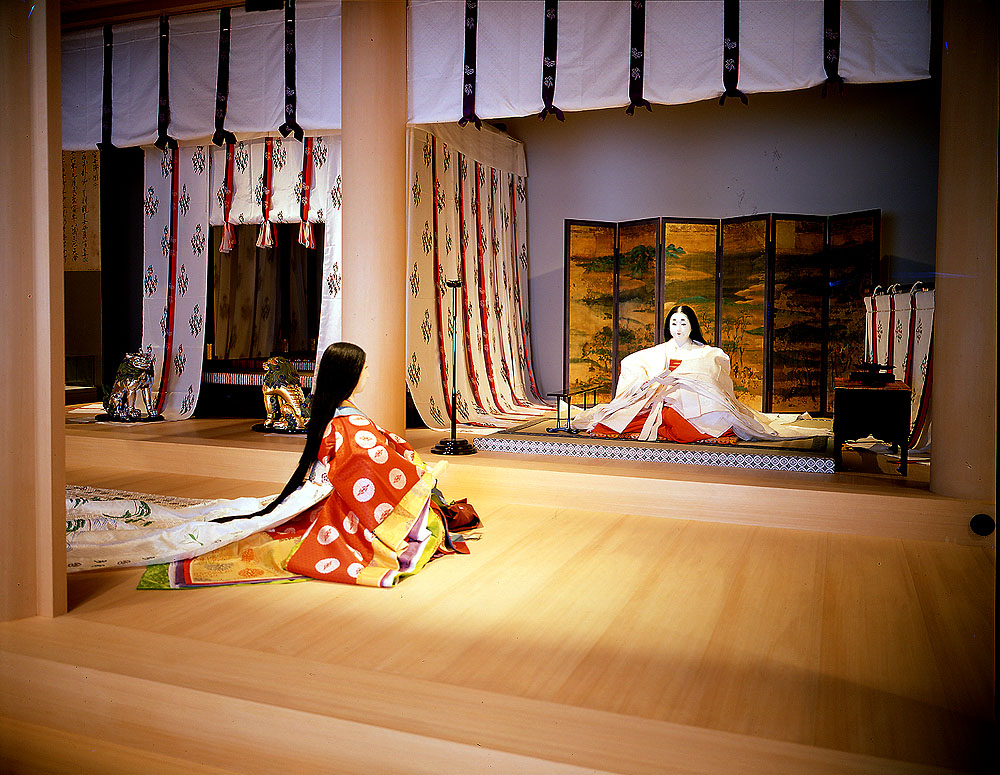 This display recreates the Saio’s day-to-day life. The Saio is in the center of the room, attended by a senior female bureaucrat whose title was Myobu. Although the Saio’s duty was to serve the kami (deities), her daily life was not much different from that of the aristocracy living in the capital. Both the Saio and her Myobu are wearing multi-layered robes called juni-hitoe, the formal attire of female aristocrats in the Heian period (late 8th to second half of 12th centuries).
This display recreates the Saio’s day-to-day life. The Saio is in the center of the room, attended by a senior female bureaucrat whose title was Myobu. Although the Saio’s duty was to serve the kami (deities), her daily life was not much different from that of the aristocracy living in the capital. Both the Saio and her Myobu are wearing multi-layered robes called juni-hitoe, the formal attire of female aristocrats in the Heian period (late 8th to second half of 12th centuries).On view inside the display case on the left are recreated examples of banquet dishes served at the Saiku. Inside the case on the right are recreated examples of the furniture and utensils used by the aristocracy.
Exhibition Hall I: The Saio’s duties
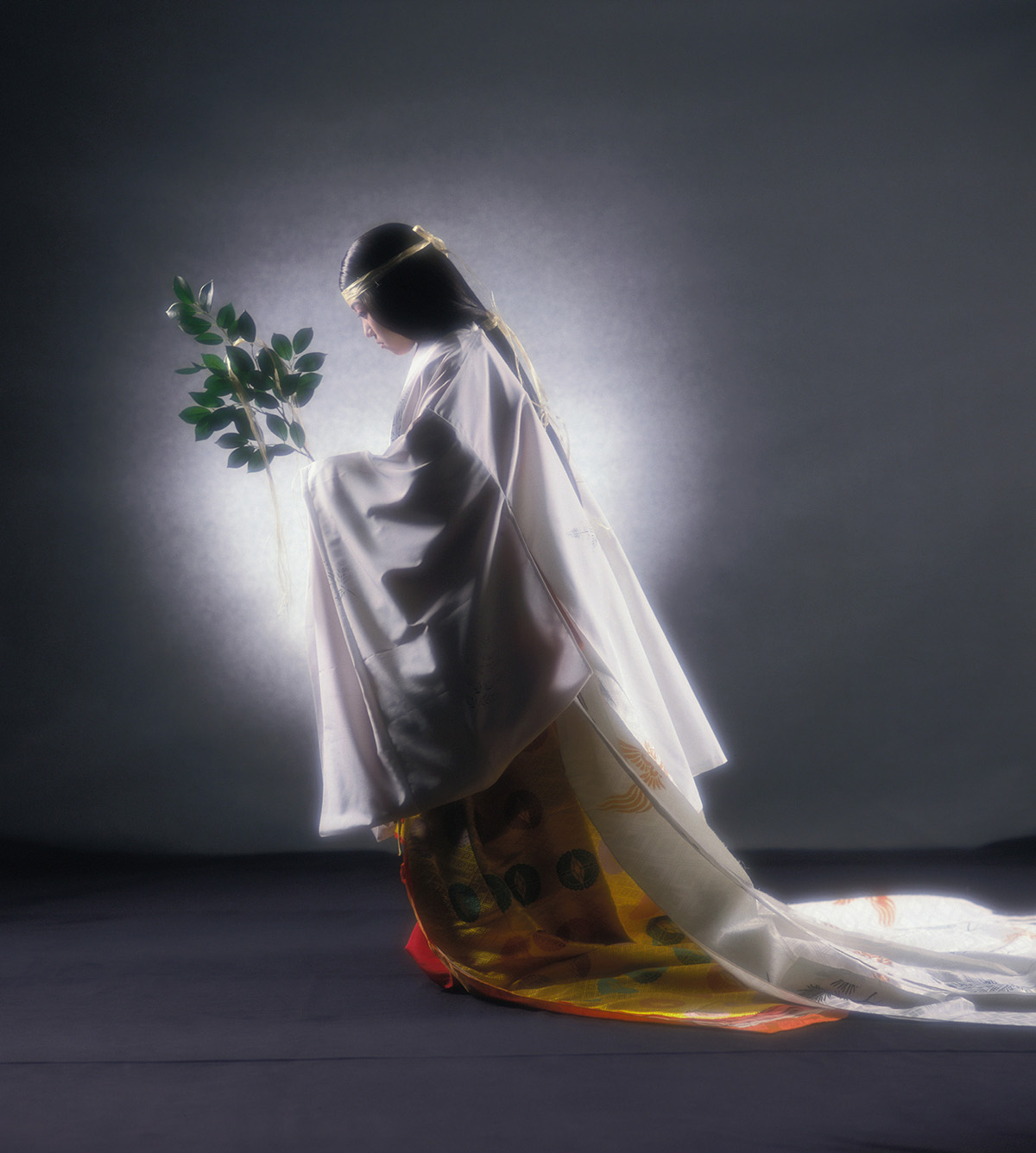 The Saio’s most important duty was to attend three of Ise Jingu shrine’s annual ceremonies. In the month preceding each ceremony, the Saio readied herself by performing a purifying ritual at a nearby river or seashore. At the ceremony, the Saio performed a worship ritual, which involved erecting a futotamagushi—a special tree branch considered an embodiment of the kami (deity)—in the ground in front of the shrine gate. This diorama shows a 7-minute enactment of the ritual.
The Saio’s most important duty was to attend three of Ise Jingu shrine’s annual ceremonies. In the month preceding each ceremony, the Saio readied herself by performing a purifying ritual at a nearby river or seashore. At the ceremony, the Saio performed a worship ritual, which involved erecting a futotamagushi—a special tree branch considered an embodiment of the kami (deity)—in the ground in front of the shrine gate. This diorama shows a 7-minute enactment of the ritual.
Exhibition Hall I: The world of courtly literature
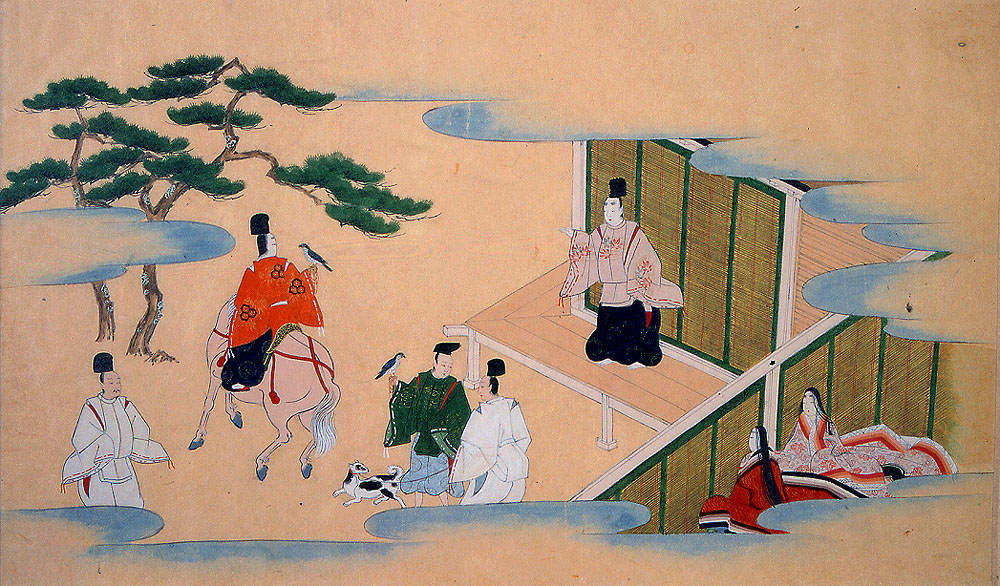 Literature of the Heian period contains valuable information on the politics, society, and lifestyles of the aristocracy. The Saiku and Saio appear often as subject matter, providing clues as to how the Saiku was regarded by contemporary people.
Literature of the Heian period contains valuable information on the politics, society, and lifestyles of the aristocracy. The Saiku and Saio appear often as subject matter, providing clues as to how the Saiku was regarded by contemporary people.On display is a reproduction of the Illustrated Handscroll of the Tales of Ise. It recounts the liaison between a Saio and a nobleman visiting the Saiku, one of the episodes recorded in the literary work, Ise Monogatari (The Tales of Ise)
Exhibition Hall II: Reconstructed scale model of the Saiku
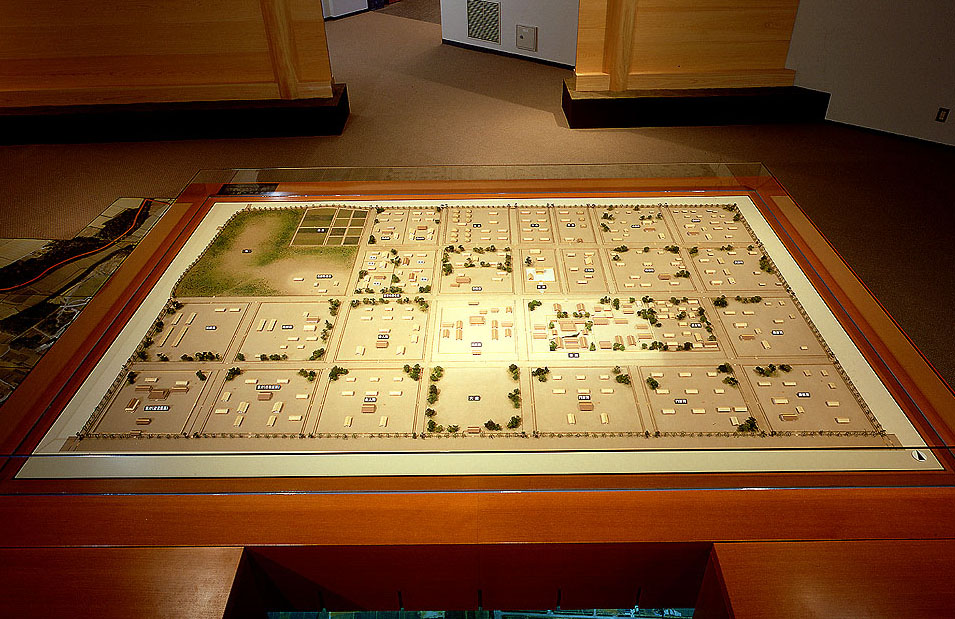 On display here is a 1:400 scale model of the facilities that constituted the Saiku 1,200 years ago. Underneath the model is an aerial photograph of the site today. The yellow lines correspond to the border of the blocks containing each facility. The orange lines denote the area designated by the national government as a Historic Site.
On display here is a 1:400 scale model of the facilities that constituted the Saiku 1,200 years ago. Underneath the model is an aerial photograph of the site today. The yellow lines correspond to the border of the blocks containing each facility. The orange lines denote the area designated by the national government as a Historic Site.The Saiku’s facilities covered an area 1 km east to west, and 0.5 km north to south. Roads were laid out on a grid plan. The blocks enclosed by a fence is the Naiin, where the Saio’s residential palace was located. Other blocks are thought to have belonged to various departments of the Saiku’s government offices.
Exhibition Hall II: Life-size model of an archaeological excavation of the Saiku site
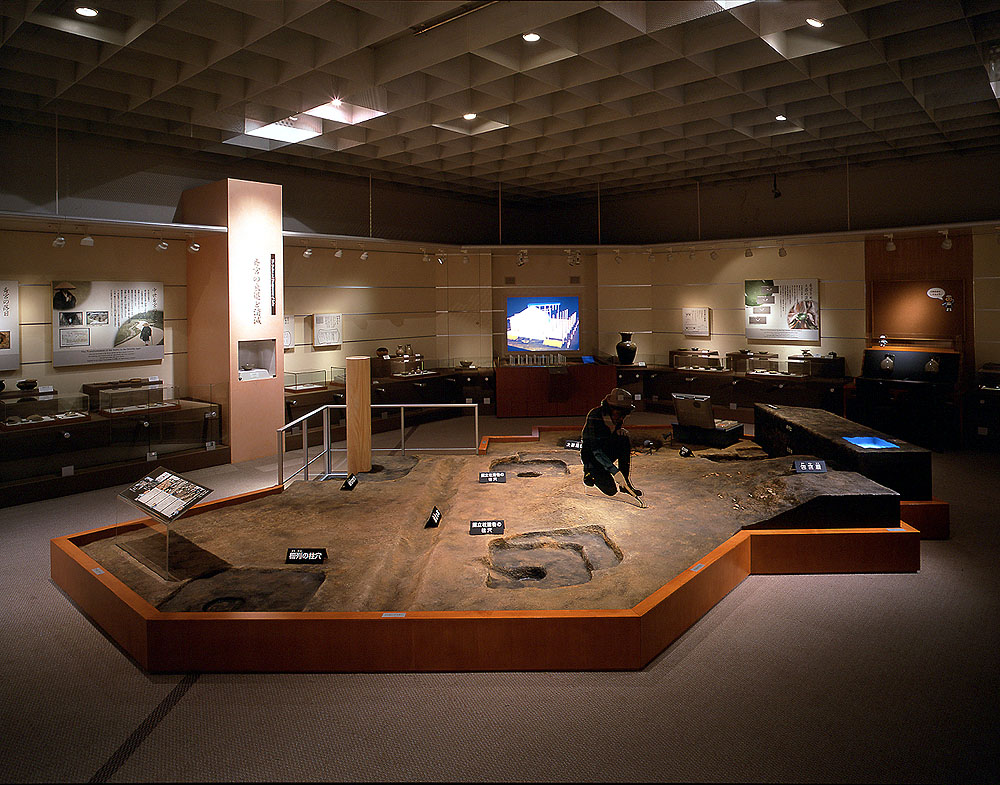 Reproduced here in actual size is a scene of an archaeological excavation at the Saiku site. It shows post holes identified by excavations, and buried earthenware fragments, as well as an unearthed deposit of discarded earthenware. The model also shows how the posts were originally erected.
Reproduced here in actual size is a scene of an archaeological excavation at the Saiku site. It shows post holes identified by excavations, and buried earthenware fragments, as well as an unearthed deposit of discarded earthenware. The model also shows how the posts were originally erected.
Exhibition Hall II: Artifacts excavated from the Saiku site
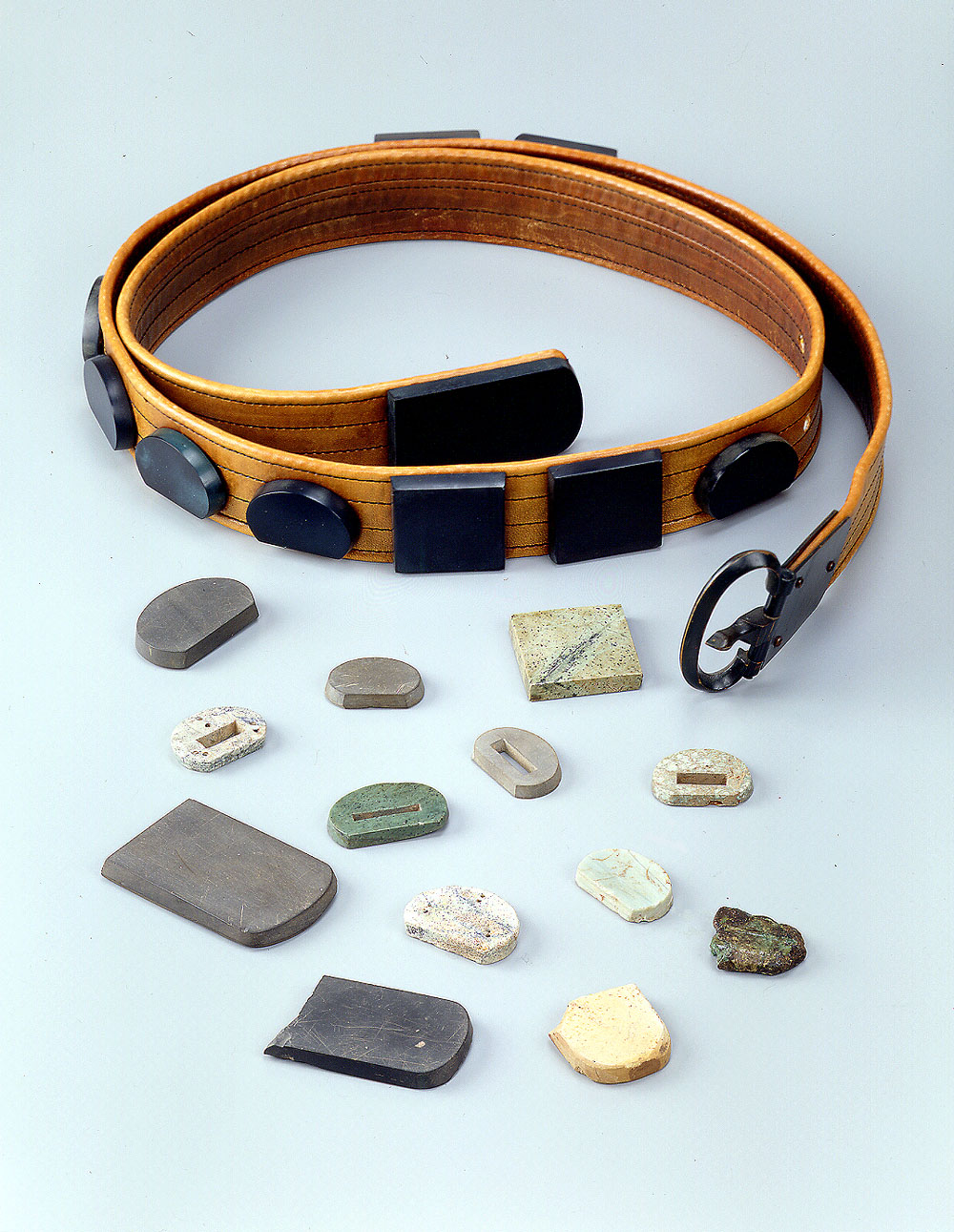 Displayed in the cases along the wall are artifacts retrieved from the Saiku site. Exhibits include objects indicating the activities of the Saiku’s government officials, such as inkstones and stone belt ornaments. Also on display are earthenware vessels bearing ink inscriptions in hiragana and auspicious letters; luxurious green-glazed ceramics; and ceramics imported from China, which replaced green-glazed ceramics as the luxury ware most prized by the aristocracy.
Displayed in the cases along the wall are artifacts retrieved from the Saiku site. Exhibits include objects indicating the activities of the Saiku’s government officials, such as inkstones and stone belt ornaments. Also on display are earthenware vessels bearing ink inscriptions in hiragana and auspicious letters; luxurious green-glazed ceramics; and ceramics imported from China, which replaced green-glazed ceramics as the luxury ware most prized by the aristocracy.Visitors are invited to try their hands at dating earthenware vessels, and completing puzzles reconstructing earthenware from fragments.
Earthenware vessels have different shapes depending on their date of production. The process of their evolution is shown in another room.
